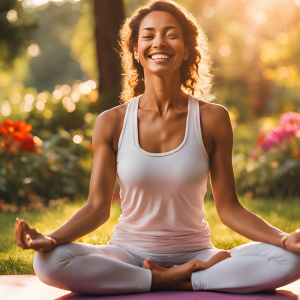
Hey Superwomen!
In today’s fast-paced world, we’re constantly juggling multiple roles – career woman, mother, partner, friend – often putting everyone else’s needs before our own. But remember, you can’t pour from an empty cup. This blog, “Thriving, Not Just Surviving,” is dedicated to empowering you to prioritize your holistic well-being and create a life filled with joy, balance, and vitality.
We believe that true wellness encompasses more than just physical health. It’s about nurturing your mind, body, and spirit 1 in harmony. Here, you’ll find inspiration, practical tips, and expert advice to help you navigate the challenges of modern life and truly thrive.
Mind Matters: Cultivating Mental and Emotional Resilience
Your mental and emotional well-being is the foundation of a happy and fulfilling life.
- Stress Less, Live More: Learn effective stress management techniques, from mindfulness and meditation to breathing exercises and time management strategies. We’ll explore practical ways to reduce stress in your daily life.
- Embrace Self-Care: Self-care isn’t selfish; it’s essential. Discover simple yet powerful ways to nurture yourself, whether it’s taking a relaxing bath, reading a good book, or spending time in nature.
- The Power of Positive Thinking: Cultivate a positive mindset and learn to reframe negative thoughts. We’ll share tips for building resilience and fostering self-compassion.
Body Beautiful: Nourishing Your Physical Health
Your body is your temple. Treat it with love and respect.
- Food as Medicine: Explore the power of nutrition and discover delicious, healthy recipes that nourish your body from the inside out. We’ll focus on whole foods, balanced meals, and mindful eating.
- Move with Intention: Find a form of movement you enjoy, whether it’s yoga, Pilates, dancing, or simply taking a walk. Regular physical activity is vital for both physical and mental health.
- Prioritize Sleep: Sleep is crucial for restoring and rejuvenating your body and mind. We’ll share tips for creating a relaxing bedtime routine and improving your sleep quality.
Spirit & Soul: Connecting with Your Inner Self
Connecting with your inner self is essential for finding purpose and meaning in life.
- Mindfulness & Meditation: Explore the practice of mindfulness and meditation to cultivate inner peace and presence. We’ll guide you through simple meditation techniques you can incorporate into your daily routine.
- Gratitude & Appreciation: Practice gratitude and appreciation for the good things in your life. This simple practice can shift your perspective and bring more joy into your days.
- Embrace Your Authenticity: Be true to yourself and live authentically. Don’t be afraid to express your unique personality and pursue your passions.
Join Our Tribe!
We invite you to join our supportive community of women on a journey to holistic wellness. Subscribe to our newsletter for exclusive content, inspiring stories, and practical tips. Follow us on social media to connect with like-minded women and share your own wellness journey.
(Call to Action): What does holistic wellness mean to you? Share your thoughts and experiences in the comments below!
This blog post offers a broader perspective on wellness, focusing on the interconnectedness of mind, body, and spirit. Remember to use relevant keywords throughout your content and update your blog regularly to keep your audience engaged.
Meta Description: Navigate the complexities of modern life with grace and strength. This blog offers holistic wellness tips for women, encompassing mind, body, and spirit, to help you thrive in every aspect of your life.
Tags: holistic wellness, women’s health, mental wellness, physical health, emotional wellness, self-care, mindfulness, healthy lifestyle, modern woman, stress management, work-life balance, personal growth, healthy living, women’s blog, wellness tips, holistic health, natural health, healthy recipes, fitness, yoga, meditation, women’s issues, modern women,
